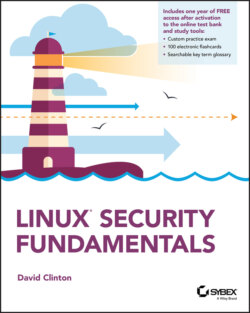Читать книгу Linux Security Fundamentals - David Higby Clinton - Страница 9
Protecting Personal Rights
ОглавлениеThese days, the greatest technology-based threats to an individual’s personal well-being will probably exist on one or another social media platform. Facebook, Twitter, LinkedIn, and other online sites present opportunities for anyone to reach out to and communicate with millions or even billions of other users. This can make it possible to build entire businesses or social advocacy movements in ways that would have been unthinkable just a few years back. But, as we all now know, it also makes it possible to spread dangerous scams, political mischief, and social conflict.
As the man said, “With great power comes great responsibility.” Therefore, you need to be conscious of the possible impact of any interaction you undertake. This will be true not only for your use of your own social media or email/messaging accounts but also for any interactions taking place on sites or platforms you administrate. You could, for instance, be held legally responsible for anonymous comments left on your blog or for the use of email accounts belonging to your organization. It can be a hard balance to achieve. Are your policies unnecessarily allowing damaging content to be published or, alternatively, unfairly restricting innocuous content?
A helpful tool for maintaining perspective in these areas is to apply the grandmother test. What’s that? Before posting a message or comment on any online forum, take a minute to read it over one or two more times and then ask yourself, “Would both my grandmothers approve of what I’ve written? Is there anything that would make them uncomfortable?” In other words, ask yourself whether anyone could reasonably feel threatened or bullied by what you’re about to publish. The bottom line is to make generous use of common sense and goodwill.
With typical attention to such details, the social media community has come up with new names to describe each of the nastiest online threats. You should, unfortunately, be familiar with each of them.
Cyberstalking Stalking isn’t specific to online activities, but that doesn’t make it any less frightening. In general terms, a stalker persistently follows and observes a target, often with the goal of forcing an unwanted reaction. In the online world, cyberstalking can include electronic monitoring of a target’s online accounts and activities. Harassing cyberstalking can escalate beyond mere monitoring to include threats, slander, and identity theft.
Cybermobbing Mobbing involves large groups of people banding together to engage in bullying behavior. The nature of many social networking platforms—in particular the prevalence of anonymous accounts and the ease by which users can connect to each other—lends itself to mob formation. Often, all it can take is a single public post expressing an unpopular position and the power of tens of thousands of users can be brought to bear with the goal of making life miserable for the post’s author.
Doxxing Whether you present yourself to the online world using your real name or through an anonymous identity, you certainly don’t want your complete personal profile to become public. Considering all the data that’s already available on the internet, it’s often not hard for people with time on their hands to track down your physical address and private phone numbers. But making such information easily available on popular social media sites with the intention of causing the target harm is wrong—and, in some jurisdictions, also a crime. Victims of public doxxing have experienced relatively mild annoyances like middle-of-the-night pizza deliveries. But the practice has also proven deadly: it’s been used as part of “swatting” attacks, where people call a victim’s local police department claiming there’s a violent crime in progress at the victim’s address. More than one doxxer has been imprisoned for what must have seemed like a clever prank.
